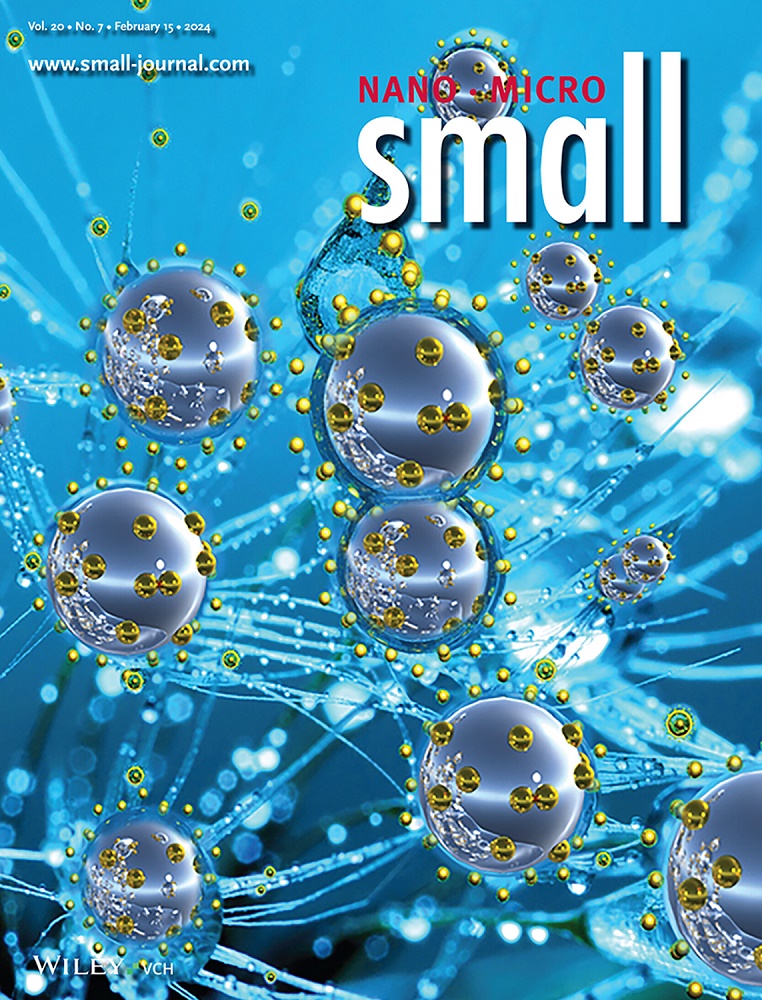A Permeable Triboelectric Fiber Mat with 35 V cm-2 Voltage Output for Wearable Wireless Sensing Electronics.
IF 12.1
2区 材料科学
Q1 CHEMISTRY, MULTIDISCIPLINARY
引用次数: 0
Abstract
Textile-based triboelectric nanogenerators have emerged as a promising solution for self-powered wearable electronics, owing to their exceptional comfort derived from the inherent flexibility of textiles, coupled with their remarkable capability to efficiently harvest low-frequency energy from human motions. However, one primary challenge lies in how to enhance output and management efficiency without compromising comfort to meet the high-power consumption demands of electronics. Herein, a permeable triboelectric nanogenerator (pTENG) is reported with a voltage output exceeding 35 V cm- 2 while maintaining breathability. Such a high output of this pTENG is attributed to the enhanced dielectric constant, facilitated by the uniform distribution of liquid metal nanoparticles in the electrospun composite fiber mat. With a specially designed energy management module, the self-powering system based on pTENG can achieve 10 times faster charging speed than those regulated only by rectifiers. As a proof-of-concept demonstration, a garment integrating a pTENG, an energy management module, a temperature sensor, and a wireless transmitter is developed to form a self-powered wireless temperature sensing system, which can sense and transmit temperature data to a relay terminal module. This integration reduces reliance on external power while enabling real-time wireless health monitoring, highlighting the great potential of body area networks in personalized healthcare.用于可穿戴无线传感电子器件的35 V cm-2电压输出的可渗透摩擦电光纤垫。
基于纺织品的摩擦电纳米发电机已经成为自供电可穿戴电子产品的一个有前途的解决方案,因为它们从纺织品固有的灵活性中获得了非凡的舒适性,再加上它们从人体运动中有效收集低频能量的卓越能力。然而,一个主要的挑战在于如何在不影响舒适性的情况下提高输出和管理效率,以满足电子产品的高功耗需求。本文报道了一种可渗透摩擦电纳米发电机(pTENG),其输出电压超过35 V cm- 2,同时保持透气性。这种pTENG的高输出归功于电纺复合纤维垫中均匀分布的液态金属纳米粒子提高了介电常数。通过特殊设计的能量管理模块,基于pTENG的自供电系统可以实现比仅通过整流器调节的充电速度快10倍的充电速度。作为概念验证演示,设计了一种集成了pTENG、能量管理模块、温度传感器和无线发射器的服装,形成了一个自供电的无线温度传感系统,该系统可以感知温度数据并将其传输到中继终端模块。这种集成减少了对外部电源的依赖,同时实现了实时无线健康监测,突出了身体区域网络在个性化医疗保健中的巨大潜力。
本文章由计算机程序翻译,如有差异,请以英文原文为准。
求助全文
约1分钟内获得全文
求助全文
来源期刊

Small
工程技术-材料科学:综合
CiteScore
17.70
自引率
3.80%
发文量
1830
审稿时长
2.1 months
期刊介绍:
Small serves as an exceptional platform for both experimental and theoretical studies in fundamental and applied interdisciplinary research at the nano- and microscale. The journal offers a compelling mix of peer-reviewed Research Articles, Reviews, Perspectives, and Comments.
With a remarkable 2022 Journal Impact Factor of 13.3 (Journal Citation Reports from Clarivate Analytics, 2023), Small remains among the top multidisciplinary journals, covering a wide range of topics at the interface of materials science, chemistry, physics, engineering, medicine, and biology.
Small's readership includes biochemists, biologists, biomedical scientists, chemists, engineers, information technologists, materials scientists, physicists, and theoreticians alike.
 求助内容:
求助内容: 应助结果提醒方式:
应助结果提醒方式:


